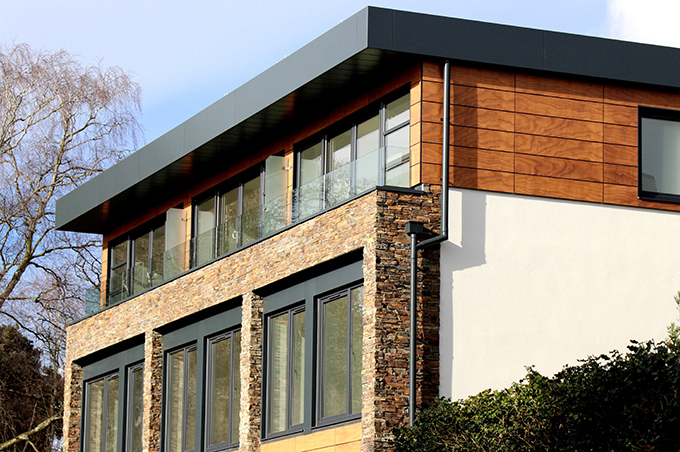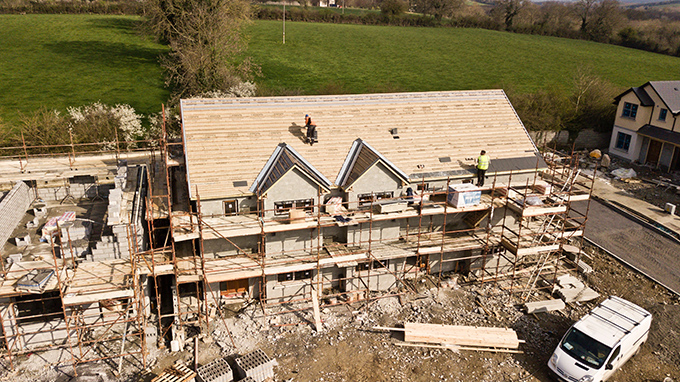
As your family grows, so does your need for space. And while you can always move into a bigger house, sometimes you’d prefer to stay put. A home addition can make this a logical and cost-effective choice.
If you want your home addition to look good and add value to your property, it needs to look like it’s part of the original structure and design.
How to Make Your Addition Look Natural
Home additions start with the best of intentions. Popular home additions include living room expansions, sunroom add-ons, home office conversions, mudroom additions, and outdoor living spaces (like screened-in porches). But unfortunately, many additions end up looking unnatural or out of place.
“We’ve all seen one: the old house that suddenly sprouts an obtuse room extension or overpowering wing addition, subverting the stylistic form and swallowing its original structure —all in the pursuit of increased space,” Gordon Bock writes for Old House Journal. “Additions to old houses don’t have to be incongruous appendages out of sync with the scale and details that give the building its character.”
Home additions can create more space and add more value to your house. However, if done incorrectly, you could actually add space and hurt value.
“Few things will weigh a home down – in terms of value – more than an inconsistent and unappealing look,” Mark IV Builders explains. “That’s why we carefully work with our clients to ensure that the home addition looks as natural as possible.

If you want your home addition to look seamless and effortless, you’ll need a plan. Here are some suggestions:
-
Think About Architecture
Most homeowners have a tendency to focus on interior design, but this should actually be the last thing you consider. Before even thinking about paint colors, trim, and finishes, you need to figure out how the addition will look architecturally. This means taking into account elements like windows, roofline, and elevations.
-
Use Similar Materials
One of the more difficult aspects of designing a visually seamless home addition is trying to match materials – particularly if the home was built 25 or 50 years ago. Whether it’s hardwood flooring, brick siding, or rustic wooden beams, it’s tough to mimic the same character and visual appearance. However, you have to get as close as possible.
-
Prioritize Scale and Proportion
The biggest mistake homeowners make when adding a room or expanding a section of the home is using the incorrect sale and proportion. If you get this wrong, the addition will never look like a natural part of the original home.
-
Work With the Property
It’s not enough to think about architecture, materials, and scale. You also have to consider the plot of land your home is built on. Otherwise, you could end up with an addition that fits the house, but is at odds with the larger property.
“Failure to take the grade and slope of the property into account can lead to a visually jarring final product, as the addition may not follow the natural contours of the land,” Nisbet Brower explains. “For example if the land slopes away from the existing structure, your best bet is to step the foundation walls of the home addition down accordingly, so that you won’t have an unsightly foundation wall sticking out from the ground.”
These are all things a good team of architects, designers, and contractors can help you work through.
-
Select the Right Contractor
Speaking of contractors, you need the right one. Don’t just hire the first general contractor you come across. You want someone who has experience working with home additions and has the same priorities as you. In other words, they need to be focused on seamless architecture, proper material selection, appropriate scale and proportions, and the flow and contour of the property.
-
Draw the Line
If you aren’t careful, your isolated home addition could turn into a massive project that keeps growing and expanding. Too much addition will swallow up the home and leave you with an unattractive finished product. This is why it’s important to draw the line as early as possible.
Pay Attention to the Details
It’s easy to get the big picture elements right. What’s more challenging is to properly implement all of the small details that are required in order to take the addition from good to great.
As you plan for your add-on, be thorough and patient. You’ll be rewarded for your discipline.



